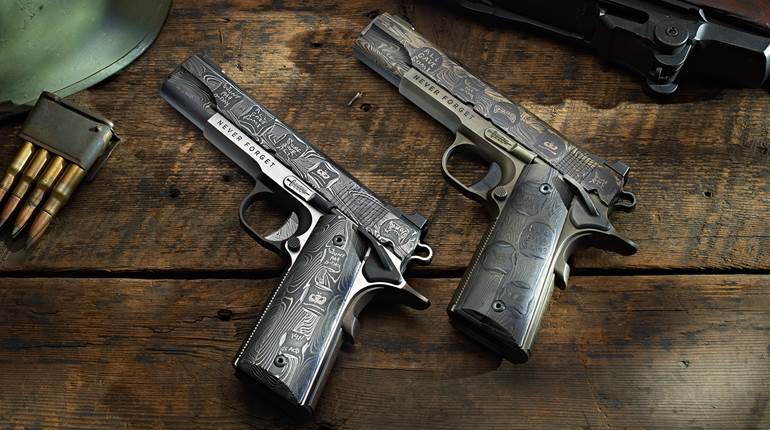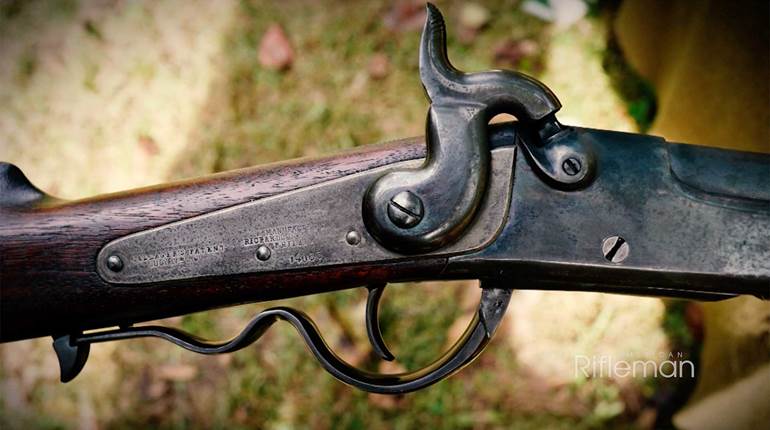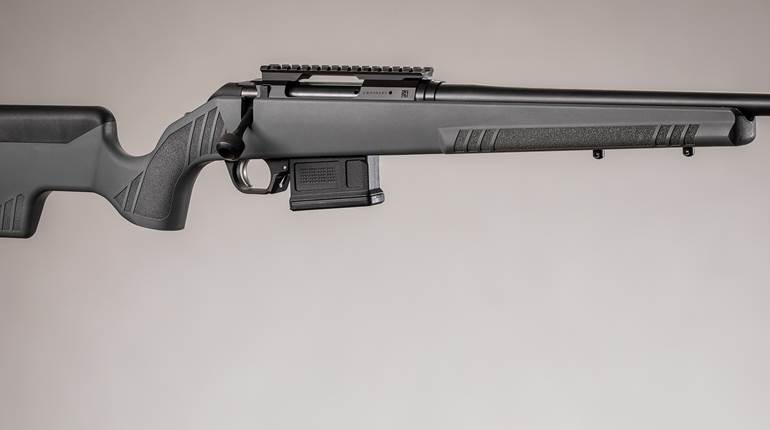At the beginning of World War II, very few submachine guns were available to the Allied powers. One of the guns available for purchase was the M1928A1 Thompson submachine gun, but it was expensive and time-consuming to make. As the war developed, engineers found ways to simplifying the Thompson, and later M1 and M1A1 Thompson submachine guns were easier and less-expensive to produce. Watch our "American Rifleman Television" I Have This Old Gun segment above to see the M1 Thompson in action and learn how it was different than its predecessors.
"The M1 Thompson is a wartime expedient meant to literally make the Thompson inexpensive for purchase for the government," said Philip Schreier, director of the NRA National Firearms Museum. "When World War II began in 1939 for the rest of the world, the British Purchasing Commission put out contracts for Thompson submachine guns as being one of the more formidable, you know, submachine guns on the market at the time. And they were expensive."
Commercially available Thompson submachine guns, specifically the M1928A1 model, retailed for about $200 apiece at the start of the war, which is more than $3,000 when adjusted for inflation in 2024. Comparatively speaking, the U.S. government could obtain its new M1 Garand service rifle for approximately $85 at the start of the war, which is today's equivalent of about $1,500.
"Something really had to change. They needed to either come up with a new platform that was cheaper and easier to make, or they had to simplify the Thompson," said Evan Brune, American Rifleman executive editor. "And the U.S. Ordnance Dept. explored both options. But ultimately what did really win out, especially early in the war, was a simplified version of the Thompson submachine gun."
One of the major changes incorporated early on was the elimination of the Blish locking system used on previous Thompson models in exchange for a simplified blowback operation mechanism. The M1 Thompson, built with this blowback mechanism, also eliminated the barrel cooling fins of earlier models, the Cutts compensator at the muzzle, the complex rear sight and the top-mounted operating handle. Additionally, the heavy, complex, 50-round drum magazine was changed for a simplified stick magazine, made in 20- and 30-round variants.
"Despite all of these expediencies, There was still more that they could do, and Savage Arms really led the way in refining this already simplified design down even more," Brune said. "One of the things inside the gun was that it had this multi-component, fire-control assembly and Savage engineers found out, 'Well, hey, if you just machine a protrusion on the front face of the bolt, you don't need to have this separate hammer and firing pin and bolt. You don't need to hog out the whole thing. It'll work,' and that reduced machine time even more and made the gun even more cost-effective."
This change from a multi-component fire-control mechanism to a simplified bolt distinguished the M1 Thompson from the later M1A1 Thompson submachine guns.
"The M1 Thompson was used by most branches of the American military during the Second World War and even some of our allies," Schreier said. "Paratroopers were fond of it. The Thompson saw great service in the Pacific Islands. Photographs of the war were of U.S. Marines, you know, standing up and shooting the Thompson M1 over on the islands of the South Pacific during the Second World War."
To watch complete segments of past episodes of American Rifleman TV, go to americanrifleman.org/artv. For all-new episodes of ARTV, tune in Wednesday nights to Outdoor Channel 8:30 p.m. and 11:30 p.m. EST.

























